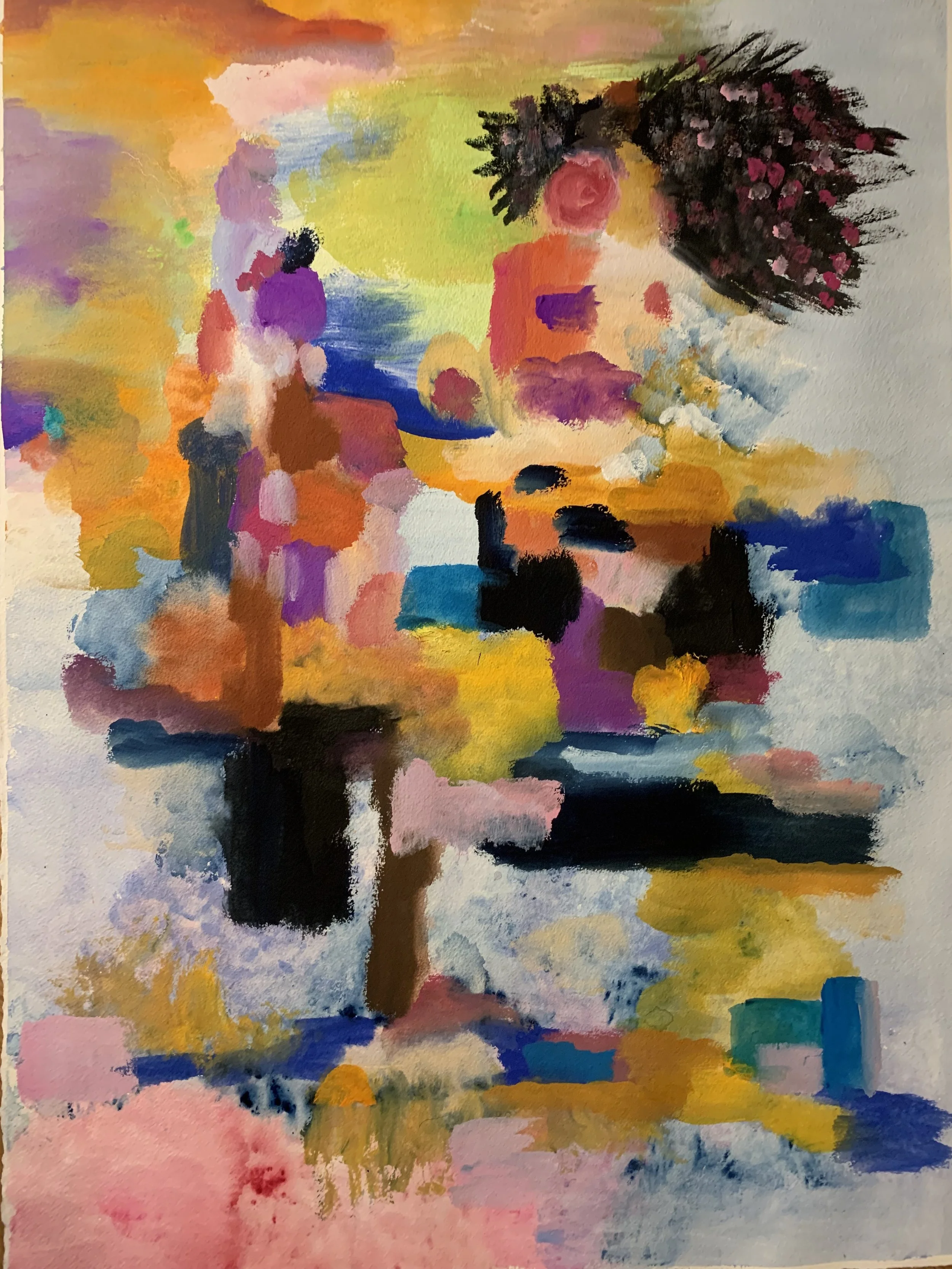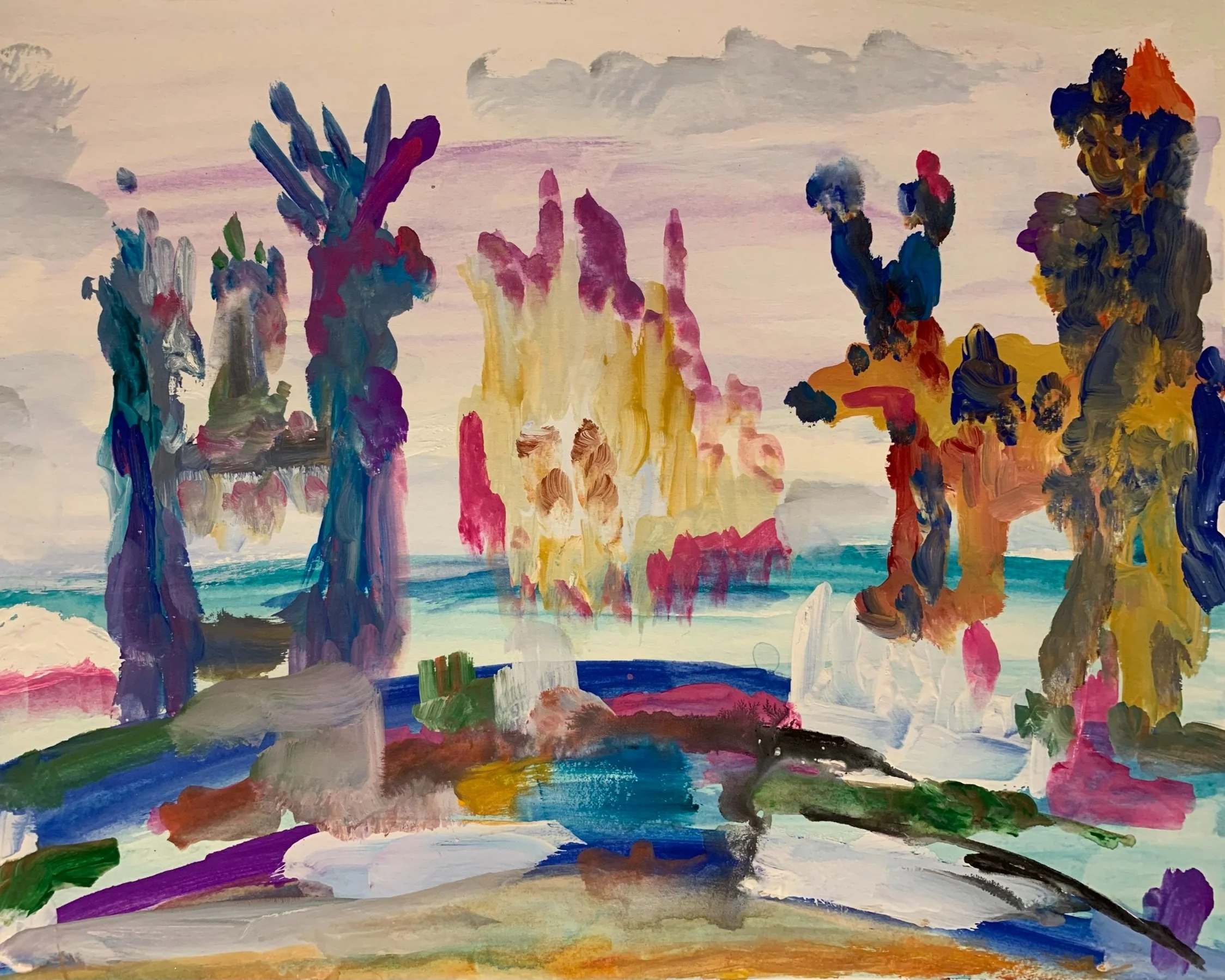Entering the Dream Gate
In all matters, I have relied on the interpretation of my dreams.–Keizan Zenji
Everywhere at all times, in all cultures and races of which we have record, when the greatest meaning, the highest value of life needed renewal and increase, the process of renewal began through a dream.-C. G. Jung
This World is as Real as a Dream
One common metaphor used in the Mahayana / Zen Buddhist schools for the nature of reality is dream. We encounter this teaching at some point in our practice–This world is as real as a dream. Dream. What makes reality a dream?
And perhaps more importantly, how is it to take the lens of dream when reflecting on our judgements, reactivities, physical sensations, relationships, work, roles and responsibilities? How is the lens of dream, different perhaps than how you normally experience yourself?
In Zen practice metaphor is a teaching tool. We take up the image. We invite the imagination, in this basic way. Inviting in dream-like nature of reality, we can begin to see the ways in which we relate to the phenomena of our lives, as something other than dream-like.
This metaphor, is a Zen koan–it is something we get to try on in the spirit of inquiry and love. What can be discovered if you tried relating to your experience of your ordinary life, as if it was a lucid dream?
When I first began my Zen practice I told my teacher that the teaching that fascinated me most was this metaphor of dream. For years my spiritual life had existed within the realm of dreams. Powerful experiences of sleep paralysis, encounters with entities and lucid dreams propelled me into a spiritual emergence wondering what is real.
The mysteries of the night awakened a deeper inquiry into the assumptions I was making about my daylit life. In dreamtime, we all enter our own subjective experience. A reflection of our own minds, but what is this mind? Where do the images come from, some of which my conscious mind could not even imagine? And then in the daylit world, the dream images subside–but where do they go? We tend to believe that everyone is having relatively the same experience. Though the whole world is emerging in our own awareness.
What is it that is aware in both sleep/dreams and in waking life? Where does the dreamer go, where do the images go when the body is awake? These are core questions that bring us into a deep inquiry with/through our own experience. Who are we really? What is this life? Can we know anything outside of our own minds?
As children we enjoyed our imaginations. A couple of years ago, I had a longer lay-over in the LAX airport. I sat in one of those aisle seats. And just watched the people pass. What was astonishing was how much children were in their own worlds. Sometimes dressed in costume, pajamas–their parents hurrying them through the airport; as they acted like dinosaurs, planes, as they sang, skipped hummed, moved sideways instead of forward, went up to strangers, laid in the middle of a busy walkway...
The free play of a child’s imagination is inexhaustible. This is also true for us as adults, though many of us seem to have forgotten.
As part of ordinary human development we develop our rational minds and move into adulthood. But what this often means is that as we develop this rational part of our minds, we often push our imaginations into the nether regions of our experience. Not valuing our capacity to dream and create, not valuing the images or voices of the unconscious. Feeling perhaps as if we outgrew this mental function, or that the imagination is child's play.
Imagination is more important than knowledge. For knowledge is limited to all we now know and understand, while imagination embraces the entire world, and all there ever will be to know and understand. Imagination stimulates process and gives birth to evolution.–Albert Einstein
The Three Bodies of Buddha
I want to turn now to a teaching from the Buddhist tradition called the Three Bodies of the Buddha or the Three Kayas. This teaching attempts to reveal three basic ways of experiencing reality. It is not meant to express a hierarchy of value (but has been rendered that way by some), it is more of an expression of the simultaneity of various levels of experience. The framework is meant to help open us up to experiencing more of ourselves and this life.
The three bodies are, Dharmakaya, Sambogakaya and Nirmanakaya. The Dharmakaya is the essence level of Mind. What we call awake awareness. It is the pristine clarity of mind’s nature. Spacious, bright, unbounded. The meditative traditions of today provide methods for us to recognize and familiarize ourselves with this essence level. Which is always present, but easy to overlook because it is unconditioned, the very screen on which the content of our lives appears to play out. The space that allows all forms to appear, take shape and transform. When the essence level is recognized one’s life is held in a deeper sense of enduring freedom.
People dedicate their lives to deepening into this level, and really familiarizing themselves with the ground of being. A conceptual understanding does not even begin to relay the kind of complete transformation that is possible when one recognizes and opens the Dharmakaya. I do not mean to just breeze through this. Dharmakaya realization is the reason for the Buddhist path, nothing is separate from this realization.
The Nirmanakaya pertains to physical reality. In Buddhism this is the body of compassion. Compassion happens in relationship. The Nirmanakaya is the stuff that makes up our relationships. Our beliefs, our physical bodies, conditioned reality, governments, societies, laws, what Process Work Psychologist Arnold Mindell calls Consensus Reality. Reality made and shaped by our consensus. On a psychological level, these are the identities and roles that we inhabit that feel most like “ourselves.” Usually this is what we think we know about ourselves and the world. The rational mind is most comfortable here.
The Sambogakaya is perhaps the most mysterious in that it includes the subtle, the energetic, the paranormal, the psychic, the imaginal, the shadow and dreams. In this realm of being, non-ordinary experiences happen. We connect with parts of ourselves and reality that we may not be able to be understood rationally at this point. This is also what we call in the Buddhist tradition, the subtle body.
In the Buddhist tradition there has always been great respect for all three of the Buddha bodies. Extrasensory perception was something that the historical Buddha and their disciples claimed to have. Many of the early stories of the ancestors involve prophetic, vivid, colorful dreams. Meditation practices involving visualization, subtle body practice, rigorous chanting, breath-work and various rituals opened up the sambogakaya experience for practitioners.
As with the nirmanakaya and the dharmakaya, sambogakaya experience is happening all of the time. Carl Jung rediscovered this in his experiments with dream, creativity and active imagination. Realizing a realm he called the unconscious or the collective unconscious that contained both our powers/strengths and our shadows.
Dream Body; Earth Body
Which body are you in?
In the meditative traditions of modernity, we tend to emphasize consensus reality and the essence level. Consensus reality is limiting, this is where suffering is found; the essence level is pristine, unbounded awareness; this is where freedom is found. They are ultimately inseparable so find freedom in your everyday life. This is a common narrative that you might find in a mindfulness program, or a class on meditation.
Dreams, images, emotional and visionary experiences, spirits, extrasensory experiences are considered makyo, “delusions” not to be entertained, for they are just diversions on the path.
And yet, in the Zen and Tibetan traditions we find the use of metaphor and image to describe states of mind and aspects of the awakened life. We have koans that make use of story, image and the spontaneous creativity of mind’s nature as the Dharma gate of realization.
Imagination is happening, we all have an inner life. Meditation practice often frees one up to express creatively in unconventional ways. We see this in the great works of art by Zen masters, in the forms of calligraphy, poetry and ceramics. But also in the way that they respond creatively to situations.
Imagination is happening all the time. We are moved by certain works of art, we resonate with poetic images, we dream and are affected by our dreams. We have psycho-physical reactions to experiences, we are drawn to specific images and symbols in our daily life. Perhaps pausing to look at the sky or take in a tree, or finding yourself reflecting on a image in a movie or in the news.
The disturbing, the intriguing, the difficult and the beautiful are all part of our lives as humans. What happens when we welcome them into the path?
This is a dream.
What happens when we bring more of the dreaming to our waking lives; and more of the waking to our dreaming lives?
Perhaps we feel more integrated, perhaps we see the world ensouled, perhaps we are in touch with the creativity and spontaneity of the universe, perhaps we invite a little more mystery.
Collective Dreaming
Part of what fascinates me about dreamwork is doing it together. Perhaps this is simply enacting an ancient human ritual or form of spirituality. What if our dreams aren’t meant for ourselves alone, but are meant to be shared with our communities, our families, our earth? What does it mean to share in someone’s dreamscape? To be invited into their dreaming? To be touched by some else’s dream? The Earth’s dream? The Dream of the Cosmos?
I enjoy inviting these questions into the discourse on dream. Not that there need to be answers, but to allow dreaming its place in the mystery.
I also invite these questions, because we tend not to share our dreams. We tend to keep them quiet. Or think them strange and having nothing to do with our relationships, responsibilities, communities, world.
Yet, the three bodies of the Buddha are functioning simultaneously all the time. We bring our inner lives to everything we do, as we function in consensus reality, as we abide in the unconditioned. What I am saying is, we already are dreaming together–so why not make it a little more conscious. And what happens when we do that? What happens when we let the dreaming have a space in our awareness? What happens to our relationships, our lives, our world–our practice, and our awakening?
I am looking forward for opportunities to explore dream, creativity and imagination in community / with others. It seems like the world at this time could use more people attuned to the dream realm and actively attending to the emergent creativity of the universe. Let’s dream together!


